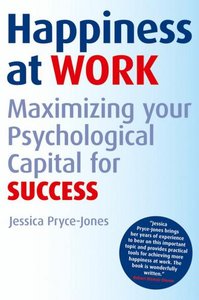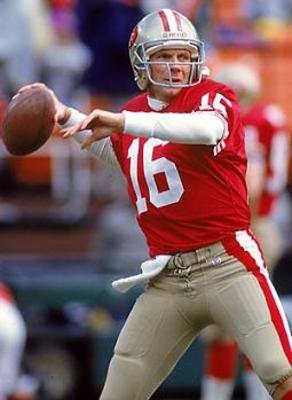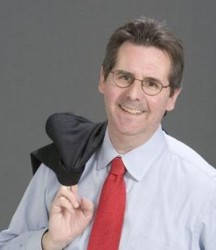Yesterday, I was waiting for a printing job to be quoted at Kinkos and started to browse the paperback books in the display near the counter. I expected to see the usual self-help books regarding how to construct a resume, handle interviews, and ask intelligent questions at your next interview. What I didn't expect to see was a nearly equal number of books about how to attain happiness.
Over the last few years, it seems the "happiness industry" has exploded. It is tough for me to go even a couple of days without reading something about how to attain happiness–particularly in the realm of business and work. Maybe this is a sign that we're all miserable and having a hard time coping! 
Whatever the reason, you can bet that those whom you manage are reading some (or a lot) of this material as well. If you're responsible for retaining and coaching a team, you may want to spend some time becoming proficient on this topic.
If someone on your team asks you the question…"How do you find happiness and fulfillment in your work?" How would you answer that question?
I know that if I was one of your competitors and I was "having coffee" with one of your agents, it would be one of the first questions I would ask. Why? Because I would try to tap into the negative emotion the person is potentially feeling. Giving someone hope they will be happier somewhere else is a powerful motivator and can help open an individual's mind to considering change.
So, do you have an answer to this question that you can proactively offer to your agents? If not, I'd like to share some commentary that I recently read in the Wall Street Journal on the topic. The article highlights research conducted by the iOpener Institute for People and Performance on how people find happiness and engagement at work.
Jessica Pryce-Jones oversaw the research that began in 2006 and had more than 9,000 participants from around the world. The data suggests that most people feel less confidence, motivation, loyalty, resilience, commitment and engagement in their jobs in recent years.
But, there is a smaller group of people who counteract this trend and report feeling a sense of well-being and "happiness." If an individual happens to be in this group, he/she will display behaviors that employers find very beneficial, such as:
- Staying twice as long in their jobs as their least happy colleagues
- Spending double the time at work focused on what they are paid to do
- Taking ten times less sick leave
- Believing, at twice the rate of their peers, that they are achieving their potential
Jones also notes that the science of happiness at work has big benefits for individuals too. If you’re really happy at work, you’ll solve problems faster, be more creative, adapt fastest to change, receive better feedback, get promoted quicker, and earn more over the long-term.
The research goes on to suggest that there is a strong correlation between a person's happiness at work and the characteristics of the work environment.
This is where things get interesting… The research unveils clear characteristics (what Jones calls the underlying drivers) that need to be present in your organization if those on your team are going to feel engaged and happy at work. So, according to Jones, here are the "underlying drivers" that you should strive towards in your organization: (Editorial Note: These are written in the first person, as if Jones is giving advice on what type of organization to pursue as an individual, in order to find happiness at work.)
- A Sense of Contribution. This is about what you do, so it’s made up of some of the core activities which happen at work…like having clear goals, moving positively towards them, talking about issues that might prevent you from meeting your objectives and feeling heard when you do so. You’ll do all this best when you feel appreciated and valued by your boss and your colleagues. So it’s not just about delivering; it’s about doing so within collaborative working relationships too.
- A Sense of Culture. Performance and happiness at work are really high when employees feel they fit within their organizational culture. Not fitting in a job is like wearing the wrong clothes to a party—all the time. It’s hugely draining and de-energizing. If you’re in the wrong job, you’ll find that the values mean little to you, the ethos feels unfair or political, and you don’t have much in common with your colleagues.
- A Sense of Commitment. Commitment matters because it taps into the macro reasons of why you do the work you do. Some of the underlying elements of commitment are perceiving you’re doing something worthwhile, having strong intrinsic interest in your job, and feeling that the vision of your organization resonates with your purpose. We’ve seen commitment decline for the majority of employees, post-recession, as leaders and organizations think that tuning into this soft stuff is a waste of time. It isn’t. It’s how you enable your employees to understand why they should make a greater discretionary effort for you.
- A Sense of Confidence. Confidence is the gateway to the other three drivers. Too little confidence and nothing happens; too much leads to arrogance and particularly poor decisions. Without greater levels of self-belief, the backbone of confidence, there will be few people who’ll take a risk or try anything new. And you can’t have confident organizations without confident individuals inside them.
Here's your homework: Develop an elevator speech on why agents would have the highest chance of being happy and finding engagement in your organization. Your speech should contain all the components listed above.
Next, work the thoughts from this speech into both your coaching sessions and your interviews. By doing so, you'll tap the emotion that not only has the power to retain, but also has the power to attract competitive agents to your team.
Editor's Note: This article was written by Ben Hess. Ben is the Founding Partner and Managing Director of Tidemark, Inc. and a regular contributor to WorkPuzzle. Comments or questions are welcome. If you're an email subscriber, reply to this WorkPuzzle email. If you read the blog directly from the web, you can click the "comments" link below.










